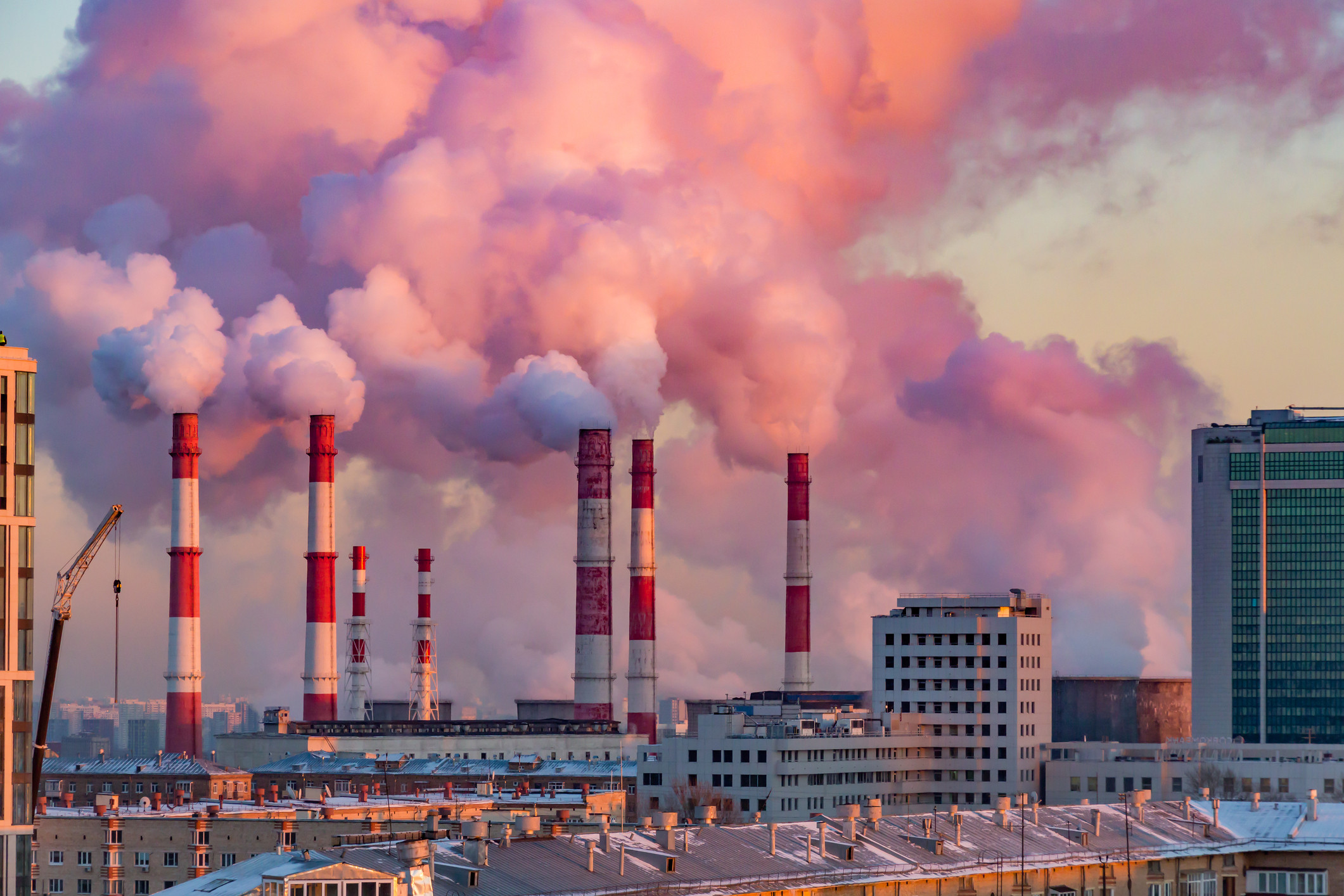How to control Air Pollution?
Definition:
Air pollution refers to the presence of harmful substances in the Earth's atmosphere that can have negative effects on human health, the environment, and the overall quality of the air we breathe. These pollutants can originate from both natural sources and human activities, and they can vary in composition and concentration depending on factors such as location, weather, and industrial activities.
Common sources of air pollutants include:
Industrial Emissions: Factories, power plants, refineries, and other industrial facilities release pollutants such as sulfur dioxide (SO2), nitrogen oxides (NOx), particulate matter (PM), volatile organic compounds (VOCs), and heavy metals into the air.
Vehicle Emissions: Cars, trucks, buses, and motorcycles emit pollutants like carbon monoxide (CO), nitrogen dioxide (NO2), VOCs, and particulate matter. Diesel engines are a significant source of particulate matter and NOx emissions.
Agricultural Activities: The use of fertilizers, pesticides, and certain farming practices can release ammonia (NH3) and other pollutants into the air.
Residential Heating and Cooking: Burning wood, charcoal, coal, and other solid fuels for heating and cooking can release pollutants like PM, CO, and VOCs.
Natural Sources: Volcanic eruptions, wildfires, dust storms, and biological processes (e.g., vegetation emitting VOCs) can contribute to air pollution.
Air pollutants can have various adverse effects:
Human Health: Exposure to air pollutants is linked to a range of health problems, including respiratory diseases (e.g., asthma, bronchitis), cardiovascular diseases, lung cancer, and even premature death. Vulnerable groups such as children, the elderly, and individuals with pre-existing health conditions are particularly at risk.
Environmental Impact: Air pollution can harm ecosystems, crops, and bodies of water. Acid rain, which forms when sulfur dioxide and nitrogen oxides react with atmospheric moisture, can damage forests, soil, and aquatic ecosystems. Ground-level ozone, a component of smog, can damage plants and reduce agricultural productivity.
Climate Change: Certain air pollutants, known as greenhouse gases (e.g., carbon dioxide, methane), contribute to global warming and climate change by trapping heat in the Earth's atmosphere.
Visibility: Air pollution can reduce visibility by scattering and absorbing sunlight. This is particularly evident in urban areas with high levels of particulate matter and other pollutants.
Efforts to combat air pollution involve a combination of regulatory measures, technological advancements, and public awareness campaigns. These efforts aim to reduce emissions from industrial processes, vehicles, and other sources, promote cleaner energy sources, and improve urban planning to reduce pollution exposure. International agreements, such as the Paris Agreement on climate change, also address the need to reduce air pollutants to mitigate their impact on both human health and the environment.
Air pollution refers to the presence of harmful or undesirable substances in the Earth's atmosphere, which can have adverse effects on human health, the environment, and ecosystems. These substances, known as pollutants, can come from both natural sources and human activities. Air pollution is a significant global concern, as it can lead to a range of health problems, environmental damage, and other negative impacts.
Common air pollutants include:
Particulate Matter (PM): Tiny solid particles or liquid droplets suspended in the air. PM2.5 (particles with a diameter of 2.5 micrometers or smaller) and PM10 (particles with a diameter of 10 micrometers or smaller) are of particular concern due to their ability to penetrate deep into the respiratory system.
Nitrogen Oxides (NOx): Gases produced from combustion processes, mainly from vehicles and industrial sources. Nitrogen dioxide (NO2) is a major component of NOx and contributes to the formation of smog and acid rain.
Sulfur Dioxide (SO2): A gas produced from burning fossil fuels, particularly coal and oil. It contributes to the formation of acid rain and can irritate the respiratory system.
Volatile Organic Compounds (VOCs): Organic chemicals that can evaporate into the air from various sources, including vehicle emissions, industrial processes, and household products. VOCs are a key component in the formation of ground-level ozone and smog.
Carbon Monoxide (CO): A colorless, odorless gas produced from incomplete combustion of carbon-containing fuels. It can interfere with the body's ability to transport oxygen and is particularly dangerous in enclosed spaces.
Ozone (O3): While ozone in the stratosphere is beneficial (the ozone layer protects us from harmful ultraviolet radiation), ground-level ozone is a pollutant that forms when NOx and VOCs react in the presence of sunlight. It can cause respiratory problems and other health issues.
Heavy Metals: Toxic elements such as lead, mercury, and cadmium can be released into the air from industrial processes and vehicles. These metals can accumulate in the environment and pose serious health risks.
Greenhouse Gases: While not typically considered traditional air pollutants, greenhouse gases like carbon dioxide (CO2) and methane (CH4) contribute to global warming and climate change.
Air pollution has significant impacts:
Health Effects: Air pollution is associated with various respiratory diseases (e.g., asthma, bronchitis), cardiovascular diseases, lung cancer, and even premature death. Children, the elderly, and individuals with pre-existing health conditions are particularly vulnerable.
Environmental Damage: Air pollution can harm ecosystems, damage crops, and contribute to acid rain, which can lead to soil and water pollution.
Climate Change: Some air pollutants, particularly greenhouse gases, contribute to global warming and climate change.
Efforts to combat air pollution involve regulatory measures, technological advancements, and public awareness campaigns to reduce emissions from various sources, improve air quality, and protect human health and the environment.

Comments
Post a Comment